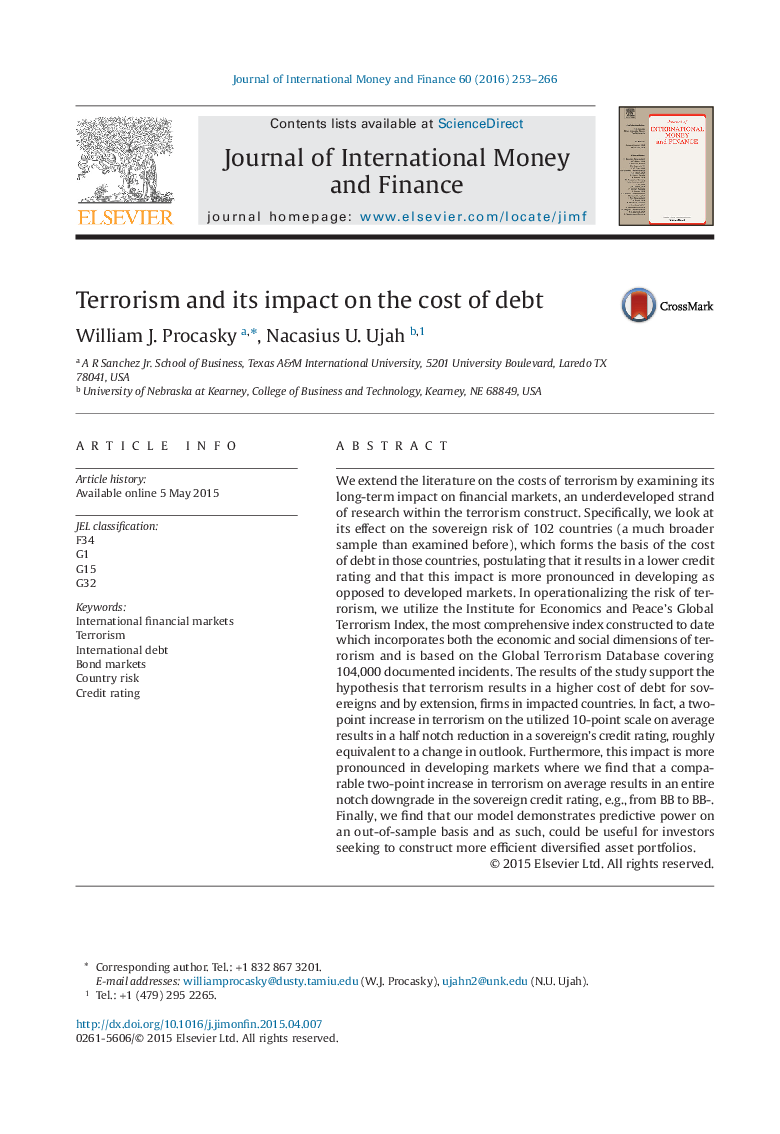| Article ID | Journal | Published Year | Pages | File Type |
|---|---|---|---|---|
| 963756 | Journal of International Money and Finance | 2016 | 14 Pages |
Abstract
We extend the literature on the costs of terrorism by examining its long-term impact on financial markets, an underdeveloped strand of research within the terrorism construct. Specifically, we look at its effect on the sovereign risk of 102 countries (a much broader sample than examined before), which forms the basis of the cost of debt in those countries, postulating that it results in a lower credit rating and that this impact is more pronounced in developing as opposed to developed markets. In operationalizing the risk of terrorism, we utilize the Institute for Economics and Peace's Global Terrorism Index, the most comprehensive index constructed to date which incorporates both the economic and social dimensions of terrorism and is based on the Global Terrorism Database covering 104,000 documented incidents. The results of the study support the hypothesis that terrorism results in a higher cost of debt for sovereigns and by extension, firms in impacted countries. In fact, a two-point increase in terrorism on the utilized 10-point scale on average results in a half notch reduction in a sovereign's credit rating, roughly equivalent to a change in outlook. Furthermore, this impact is more pronounced in developing markets where we find that a comparable two-point increase in terrorism on average results in an entire notch downgrade in the sovereign credit rating, e.g., from BB to BB-. Finally, we find that our model demonstrates predictive power on an out-of-sample basis and as such, could be useful for investors seeking to construct more efficient diversified asset portfolios.
Keywords
Related Topics
Social Sciences and Humanities
Economics, Econometrics and Finance
Economics and Econometrics
Authors
William J. Procasky, Nacasius U. Ujah,
